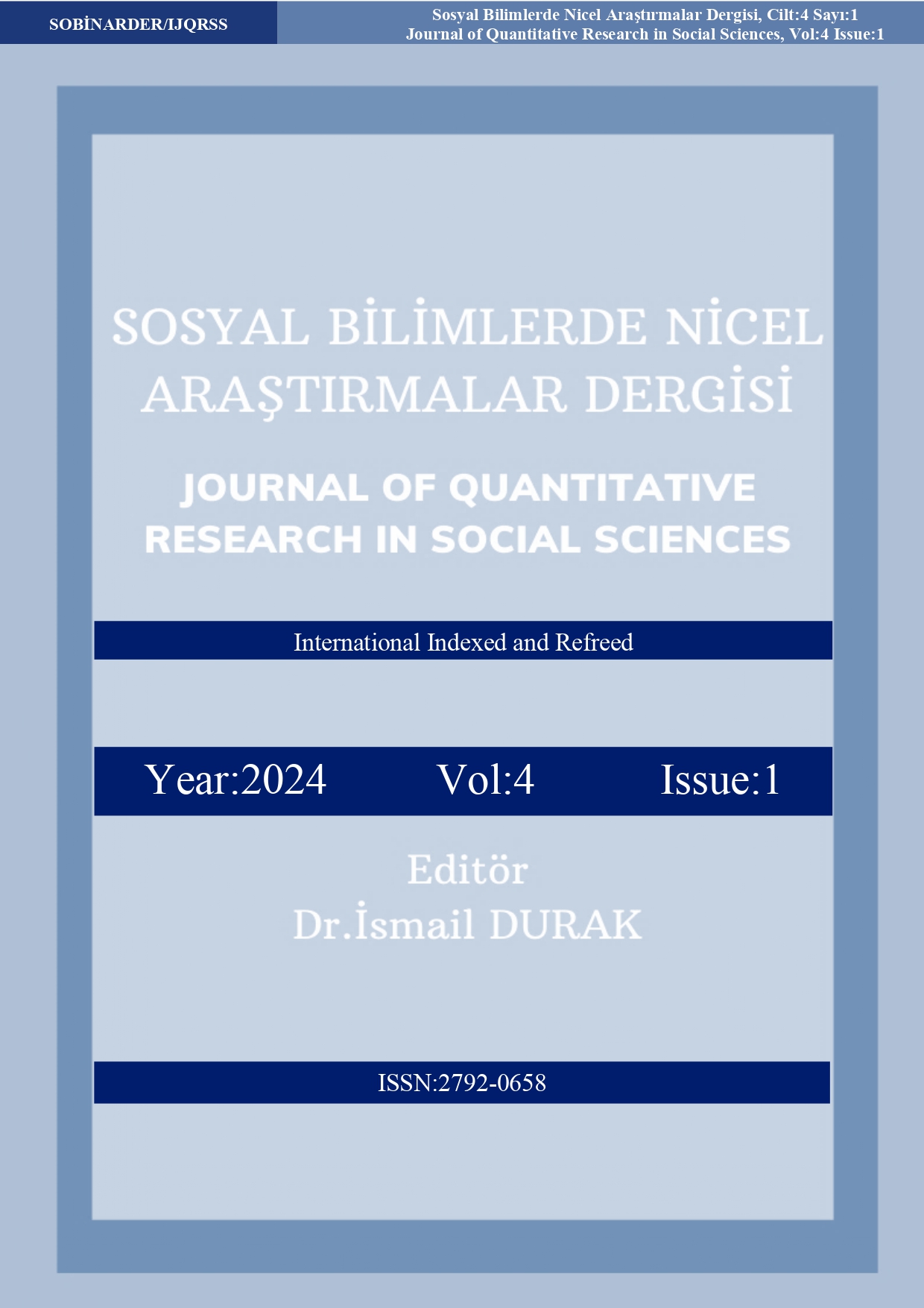Exchange Rate Passage Effect: The Case of Türkiye and European States
Döviz Kuru Geçiş Etkisi: Türkiye ve Avrupa Devletleri Örneği
Keywords:
Exchange rate, Pass-through, Unit root testAbstract
The rate and magnitude of the exchange rate transition may change in different regions in different periods. Indeed, in import-dependent countries, the transition may tend to increase, and an uncertain upward movement of the general price level will adversely affect the economy. In order to test the direction and magnitude of the transition effect between the exchange rate and prices, and to compare these results with other countries in the region, an examination was carried out between the years 2020-2024, including the pandemic period. In the study, Unit Root Test ADF and PP analyses were applied by using the producer price index (PPI), consumer price index (CPI) and real effective exchange rate series. Then, the VAR model was created. In addition to the Granger causality analysis performed to test causality, Tado-Yamomata analysis was performed. As a result of these analyses, it was observed that there was a one-way causality from PPI to CPI in Turkey. Although the magnitude of the transition was less in other countries in the region, it was concluded that its direction was from PPI to CPI.
References
Altıner, A., & Sungur, O. (2021). Türkiye’de döviz kuru ve enflasyon arasında zamanla değişen nedensellik ilişkisi: 1989-2020 dönemi için kanıtlar. İnsan ve Toplum Bilimleri Araştırmaları Dergisi, 10(4), 3398-3420.
Bouakez, H., & Rebei, N. (2008). Has exchange rate pass-through really declined? Evidence from Canada. Journal of International Economics, 75, 249–267.
Bussiere, M., & Peltonen, T. (2007). Export and import prices in emerging markets: What role for exchange rate pass-through? Frankfurt: European Central Bank.
Campa, J. M., & Goldberg, L. S. (2005). Exchange rate pass-through into import prices. The Review of Economics and Statistics, 87(4), 679–690.
Can, M. (2009). İşletmelerde zaman serileri analizi ile tahmin (Doktora tezi). İstanbul Üniversitesi, Sosyal Bilimler Enstitüsü, İşletme Anabilim Dalı, Sayısal Yöntemler Doktora Programı.
Choudhri, E. U., & Hakura, D. S. (2006). Exchange rate pass-through to domestic prices: Does the inflationary environment matter? Journal of International Money and Finance, 25, 614–639.
Erden, L., & Özkan, İ. (2014). Time-varying nature and macroeconomic determinants of exchange rate pass-through. International Review of Economics and Finance, 38, 56-66.
Ghosh, A., & Rajan, R. S. (2009a). Exchange rate pass-through in Korea and Thailand: Trends and determinants. Japan and the World Economy, 21, 55–70.
Ghosh, A., & Rajan, R. S. (2009b). What is the extent of exchange rate pass-through in Singapore? Has it changed over time? Journal of the Asia Pacific Economy, 14(1), 61–72.
Goldberg, L., & Campa, J. (2010). The sensitivity of the CPI to exchange rates: Distribution margins, imported inputs, and trade exposure. Review of Economics and Statistics, 92, 392–407.
Gust, C., Leduc, S., & Vigfusson, R. J. (2006, August). Trade integration, competition, and the decline in exchange rate pass-through. International Finance Discussion Paper No. 864. Washington, DC: Federal Reserve Board.
Holmes, M. J. (2009). The response of exchange rate pass-through to the macroeconomic environment. The Open Business Journal, 2, 1–6.
Leiderman, L. (1993). Inflation and disinflation: The Israeli experiment. ABD: University of Chicago Press.
Marazzi, M., Sheets, N., Vigfusson, R., Faust, J., Gagnon, J., Marquez, J., et al. (2005). Exchange rate pass-through to U.S. import prices: Some new evidence. International Finance Discussion Papers No. 2005-833. Washington, DC: Federal Reserve Board.
Naimoğlu, M. (2023). The exchange rate pass-through effect in Türkiye: Fourier Shin cointegration approach (2006-2023). Dokuz Eylül Üniversitesi Sosyal Bilimler Enstitüsü Dergisi, 26(1), 208-225.
Newbold, P. (1995). Statistics for business and economics (4th ed.). Prentice Hall.
Oğul, B. (2022). BRICS-T ülkelerinde döviz kuru geçiş etkisi: Panel eşbütünleşme testi. Antalya Bilim Üniversitesi Uluslararası Sosyal Bilimler Dergisi, 3(1), 83-92.
Olivei, G. (2002). Exchange rates and the prices of manufacturing products imported into the United States. New England Economic Review, Federal Reserve Bank of Boston, 3–8.
Orhunbilge, N. (2002). Uygulamalı regresyon ve korelasyon analizi. İstanbul Üniversitesi Basım ve Yayınevi.
Otani, A., Shiratsuka, S., & Shirota, T. (2003). The decline in the exchange rate pass-through: Evidence from Japanese import prices. Bank of Japan Monetary and Economic Studies, 21(3), 53–81.
Sekine, T. (2006). Time-varying exchange rate pass-through: Experiences of some industrial countries. BIS Working Paper No. 202.
Downloads
Published
How to Cite
Issue
Section
License
Copyright (c) 2024 Journal of Quantitative Research in Social Sciences

This work is licensed under a Creative Commons Attribution-NonCommercial 4.0 International License.
Telif hakkı hakkında










